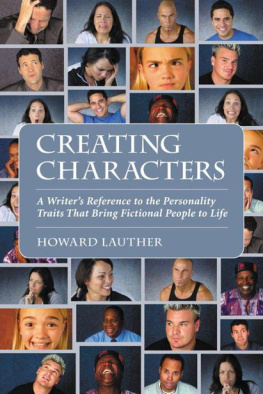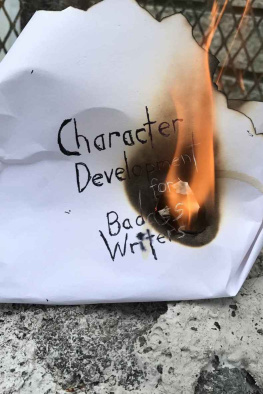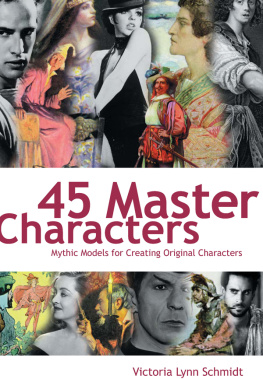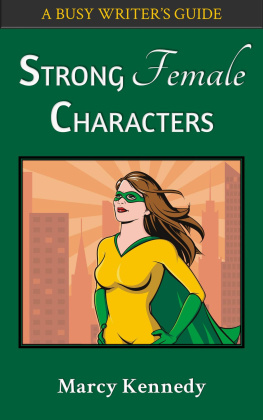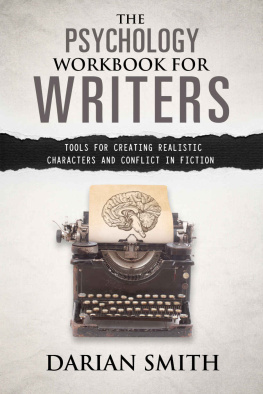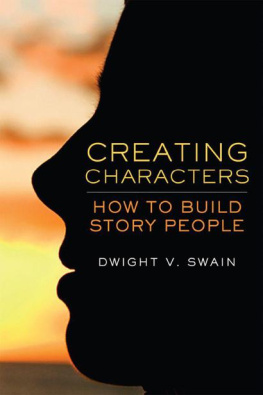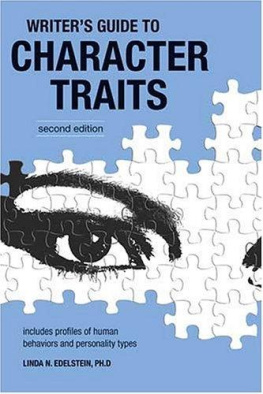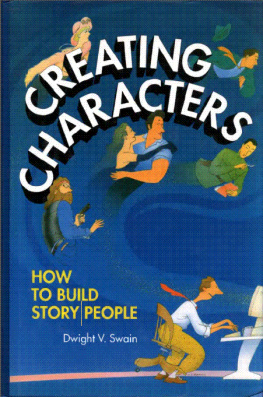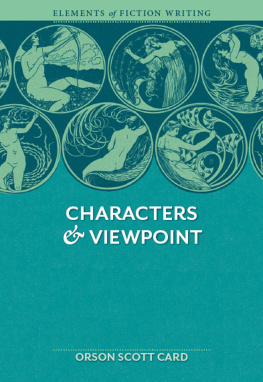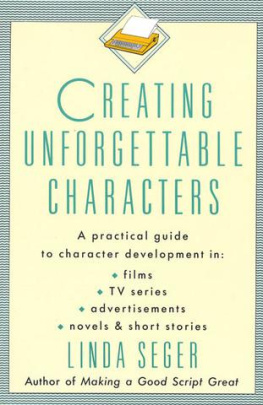Table of Contents
CREATING
CHARACTERS
A Writer's Reference to the Personality Traits That Bring Fictional People to Life
by
HOWARD LAUTHER
McFarland & Company, Inc., Publishers
Jefferson, North Carolina, and London
LIBRARY OF CONGRESS CATALOGUING-IN-PUBLICATION DATA
Lauther, Howard, 1935
Creating chararacters : a writers reference to the personality traits that bring fictional people to life / by Howard Lauther
p. cm.
Includes index.
ISBN 0-7864-2031-6
1. FictionTechnique. 2. Characters and characteristics in literature. I. Title.
PN3383.C4L37 2004
808.3'97 dc21 98-8073
British Library cataloguing data are available
1998 Howard Lauther. All rights reserved
On the cover: 2004 Photospin
McFarland & Company, Inc., Publishers
Box 611, Jefferson, North Carolina 28640
www.mcfarlandpub.com
This is a book about beginnings, and it is dedicated to every creative writer who has ever faced a blank sheet of paper with sometimes only a vague notion about some fictional characters and the story that will house them.
Introduction
This is not a how-to book. It is not a step-by-step, paint-by-the-numbers kind of reference guide that, if carefully followed, will lead you to create an audience-pleasing novel or script. Instead, Creating Characters was developed for the writer who wants to know as much as possible about a fictional character before putting one word on paper. To help the writer achieve that end, it asks a series of questions. What are the character's internal and external traits? What are his or her needs, fears, and beliefs? What does the character do for a living? The answers to these and other questions are vital parts of the biography that brings a fictional character to life.
For each question, Creating Characters provides either a wide array of possible answers or a series of further questions. Either way, the material provided is designed to encourage considerable thought about who will be charged with driving the plot. Mind you, sometimes all it takes to create an interesting hero or heroine is the answer to just one question. But even that single answer can be elusive, and the writer can waste a lot of time if he or she jumps headlong into a story with only a vague notion about the people who are in it.
Creating Characters is like a tool box. It contains hammer, saw, nails, screwdrivers, braces, levels, rulers, and other paraphernalia necessary for construction, but only the writer's skilled use of them can build something great in literature. Indeed, the tools in this book are useless without the writer's unique insight, raw talent, and ability to organize disparate parts into a coherent whole. A whopping good tale, filled with enchanting characters, is a magical act of creationand the magic comes from within.
Ultimately, this reference book has been developed to help the writer find something that may otherwise be overlookedcrucial character traits that are too often missing, leaving only stereotypes and overworked stories in their absence. It has been developed for that writer who appreciates complexity and who knows that interesting characters make interesting storiesnot the other way around.
The traits, types, fears, beliefs, and so forth discussed in this book are intended to apply to characters of either gender. For simplicity's sake, however, I have chosen to use the pronoun and its related forms in all character descriptions. I hope this does not offend the reader, or the female fictional character who is now waiting in the wings to be discovered.
Creating Characters is simple to use, but it does not take a simplistic approach, for it looks at character development from a great many angles. The best approach is always to launch your search from the Table of Contents, for it lists all the primary questions. The Table of Contents is the writer's springboard into much greater depth of detail.
Again, however, this book makes no attempt to dictate precise steps that will lead to three-dimensional characters and thumping-good stories. That is a journey you must take on your own.
1. What Are the Character's Internal Traits?
A fictional character's internal traits are not always visible to the others in the story. While fellow characters might easily spot one who is adventurous because that trait will bleed through to the outside and affect his manner, it is not always going to be readily apparent to all of the other characters if, say, the hero is intuitive or keenly observant. The author should let the reader in on the secret, but at the same time he may well choose to keep at least one internal trait hidden from the other characters in the story.
Some internal traits are inborn or inherited. These are the traits determined by a character's genetic makeup. They remain constant throughout his life, sometimes increasing or decreasing in intensity, depending upon his social environment, the prevailing situation, and so on.
Other internal traits are acquired over time depending on the character's experiencefor example, his education and social environment, or specific incidents that have occurred in his life. A character who is distrustful or cynical will usually not be born that way; instead, it is the result of what he has seen, heard, or endured.
Some acquired internal traits are strictly transitory. One or more of them may be present within the character at the beginning of the story, or they may not become a part of his inner nature until later. In either case they have the potential to disappear quickly, depending upon what turn the plot takes. Discontent, for instance, can become a character's inner trait, yet it can vanish almost immediately when he or she becomes satisfied in some way.
Here is a list of internal traits, one or more of which may be used to help formulate a fictional character.
INTELLIGENT
Related Traits:
All-knowing, analytical, astute, brainy, bright, brilliant, clever, cunning, discerning, keen-witted, logical, omniscient, perceptive, philosophical, quick, quick-witted, rational, reasonable, sharp, shrewd, smart, understanding.
Character Possibilities: Discerns things quickly and grasps concepts with better-than-average speed. Tends to divide problems and concepts into individual parts, not only seeing their relationships but observing other factors as well.
Ability to identify "gray areas" is particularly sharp.
While viewing elements that seem identical, can discern what sets one apart from the other. Tracks the ascending or descending parts of an argument and finds fault lines within them.
Sees the cause and effect of things that are often hidden from others.
Explores the sections and sub-sections of an argument as if each were a passageway that held secrets. Has a mind like a highly polished diamond. Through the power of thought, able to encircle the truth of a matter.
UNINTELLIGENT
Related Traits:
Addlebrained, backward, birdwitted, blockheaded, brainless, dense, dizzy, doltish, dopey, dull, dull-witted, dumb, empty-headed, featherbrained, foolish, fuddlebrained, ignorant, lean-witted, mindless, oafish, obtuse, rattlebrained, shallow, shallow-brained, simple-minded, stolid, stupid, superficial, thick, thick-headed, undiscerning, unperceptive, unwise, vacuous, witless, woodenheaded.
Character Possibilities:
Lags behind the average person in learning something new.
His mind contains only the thinnest layer of knowledge.
Intellect has been severely impaired since birth.
Slow to catch the meaning of a joke, and therefore may not know that he is the butt of it.
Cannot grasp complexities.
Sees only what is directly in front of him.

